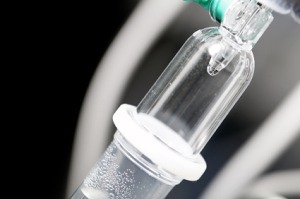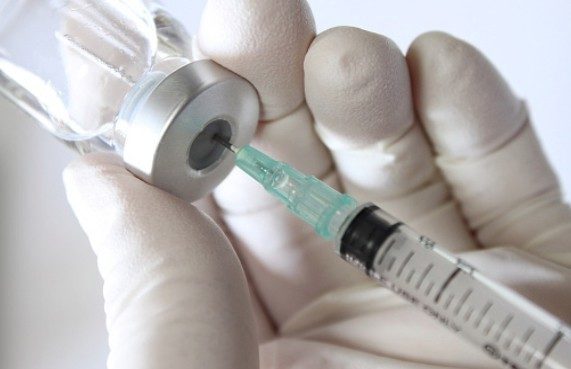IV infusion methods for low-resource environments – Full Text

“By conducting a comparative assessment of IV infusion methods, we analyzed the efficacy of different devices and identified one that most effectively bridges the gap between accuracy, cost, and electricity reliance in low-resource environments” Tomobi et al (2024).
Continuous vancomycin infusion dosing – Full Text

“Concluding, an empiric dosing regimen of 45 mg/kg results in too high vancomycin exposure and thus we recommend lower doses and differentiation according to renal function” Derijks-Engwegen and Jager (2024).
Drug compatibility with IV infusion containers – Full Text

“The aim was to systematically compare the drug compatibility with various closed intravenous (i.v.) infusion containers, to provide a reference for selecting a relatively superior infusion container and improve the medication safety for patients in clinical practice” Zhu et al (2024).
Multifunctional sensor for real-time infusion monitoring

“The SDTS placed in a disposable infusion set has high potential application in clinical practice and is low cost and easy to prepare. Specifically, we demonstrate the feasibility of the detection of the current infusion flow rate and identification of the infusion medicine type according to the triboelectric signals, providing a new solution for real-time monitoring of patient infusion in nursing wards” Qian et al (2023).
Guidelines for natalizumab treatment

“This includes information on strategies to mitigate the risk of progressive multifocal leukoencephalopathy in natalizumab-treated patients, natalizumab use during pregnancy, and use with vaccines” O’Leary et al (2023).
DripAssist review by army medics

“The DripAssist demonstrated significantly faster time to achieve infusion rates, improved accuracy, and increased user confidence” Golden et al (2023).
Subcutaneous infusion guidelines

“The ABC Model for Subcutaneous Infusion Therapy provides a systematic guideline of 42 practice recommendations for the safe delivery of subcutaneous infusions of fluids and medications in the adult population in all care settings” Broadhurst et al (2023).
Infusion rate effect on volume expansion in critically ill patients

“In this scoping review, most studies showed that slower intravenous infusion rates result in a more efficient intravascular expansion, with a longer effect, and less edema than faster rates. Effects on clinical outcomes were inconsistent” Alves et al (2023).
Standardisation of intravenous infusion therapy for paediatrics

“Many adverse events are related to the use of intravenous medications, and the great variability in their handling and preparation represents an added risk that jeopardises the safety of children” Taladriz-Sender et al (2022).
Neonatal exposure to plasticizers

“PN administration resulted in estimated daily exposures of 13.9 µg/kg/d DEHP and 95.7 µg/kg/d ATBC in premature neonates, below their respective reference doses” Panneel et al (2022).
Dosing errors due to air bubbles in infusion lines – Full Text

“The effect of the presence of an air bubble, inside an infusion line, on the time (Tnew) needed for a new medication to reach the patient after a syringe exchange was studied in this paper” Konings et al (2022).
Effect of non-return valves on infusion rates – Full Text

“The presence of a non-return valve in an infusion set-up is expected to affect the time-of-arrival of new medication in a patient after syringe exchange” Konings et al (2022).
Infusion bottle medical waste treatment – Full Text

“The effectiveness of the disinfection of infusion bottles contaminated with bacteria using soil solution reduces the number of bacteria by 98%” Marsum et al (2022).
Administration of three-percent sodium chloride infusion – Full Text

“There were no reported local infusion reaction events associated with 3% NaCl in a large healthcare system over a 10-year period. This suggests that 3% NaCl can be safely administered through a peripheral IV or central venous catheter” Moritz et al (2022).
Hypodermoclysis or IV infusion in palliative care – Full Text

“To identify the occurrences related to peripheral venipuncture and hypodermoclysis among patients hospitalized in a general hospital and in an exclusive hospital institution for the care of patients in palliative cancer care” Bolela et al (2022).
Extending the life of infusion sets to 7 days

“With the motivation to provide a 7-day infusion set that matches the CGM wear time and to improve patient experience, the recently CE-marked and FDA 510k-cleared Medtronic extended infusion set (EIS) was designed” Zhang et a; (2022).
Target-controlled infusion of anaesthetic drugs – Full Text

“In this narrative review, we discuss the development, characteristics and validation of several described general purpose PKPD models for anaesthetic drugs” Vandemoortele et al (2022).
Continuous infusion medication review

“To analyse whether the technical and legal aspects of the package insert for medicines used in paediatric intensive care units (ICU) using a continuous infusion (CI) pump corroborate the recommendations of clinical protocols and legal provisions” de Paiva et al (2022).
Remote infusion monitoring – Full Text

“The Monidor solution was developed to help nurses administer gravity-based infusions and monitor them remotely, to avoid complications and reduce workload” Puolitaival et al (2022).
Infusion techniques for patient-controlled analgesia

“To evaluate the outcomes of the different drug combination and infusion techniques for patient-controlled analgesia (PCA)” Wang et al (2021).
Smiths Medical and Ivenix partner to revolutionize infusion management

“Smiths Medical, a global medical device leader, today announced it has formed an exclusive partnership with Ivenix, Inc. that positions the companies as the first in the U.S. to offer a comprehensive suite of infusion management solutions to meet healthcare needs across the continuum of care” Ivenix and Smiths Medical (2021).
Elastomeric infusion pump refills investigated

“This preliminary study suggests that refilling is safe and reduces cost. Future research on EIP refilling using controlled and systematic methodologies are warranted” Julião et al (2021).
Drip stopping performance of liquid stop membrane for infusion set

‘It provides a practical reference value for the evaluation of liquid stopping performance of liquid stop membrane” Hua (2021).
Pain associated with continuous intravenous bumetanide infusion

“For all patients, pain symptoms resolved within 24 to 48 hours after discontinuation of bumetanide infusion with no significant electrolyte abnormalities” Herges et al (2021).
Administration of 3% sodium chloride through peripheral IV access

“This is the first study to describe a multidisciplinary protocol development and implementation process for the administration of 3% sodium chloride peripherally” Jannotta et al (2021).
Comparison of primary and secondary infusion practices – Full Text

“This descriptive observational study was conducted to increase understanding of medication administration practices during actual clinical use” Giuliano et al (2021).
Preventing drug incompatibility during multi-drug infusion

“Although many strategies have been developed in recent years to address drug incompatibility risks, clinical data is still lacking” Négrier et al (2021).
Impact of clinical pharmacy services in chemotherapy clinics

“Clinical pharmacy services at the chemotherapy infusion clinics play an important role in optimizing the chemotherapy regimens as well as identifying and managing ADEs” Mashni et al (2021).
Machine learning to identify insulin pump infusion site failures

“On the considered dataset, the proposed algorithm showed the potential to improve the safety of patients treated with sensor-augmented pump systems” Meneghetti et al (2021).
Acetate Ringer’s solution versus 0.9% saline for septic patients

“Comparison of outcome between acetate Ringer’s solution and saline for intravenous infusion in adult septic patients” Liu et al (2021).

